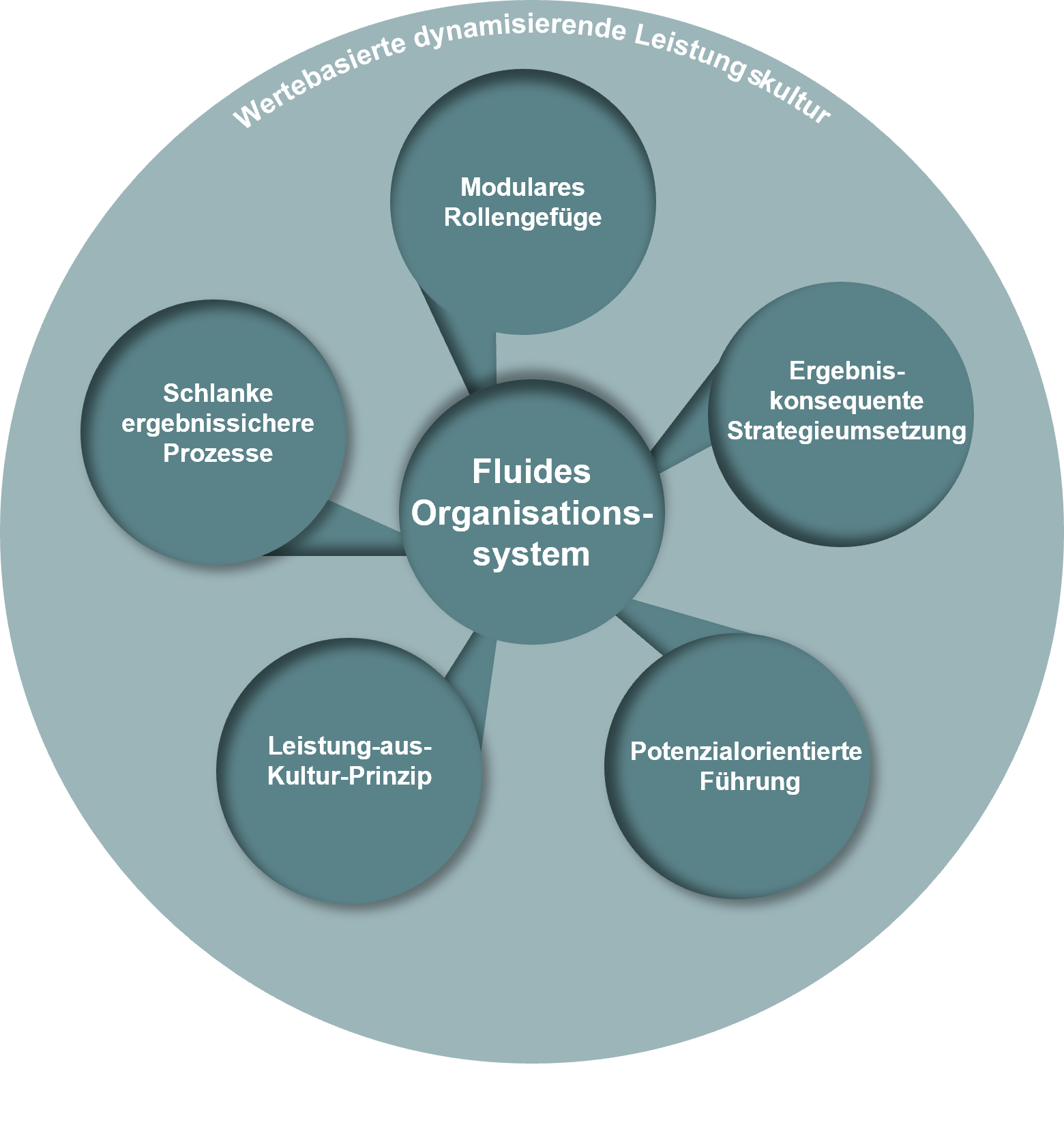FLUIDS
ORGANIZATION
The best organizational system for growth and earnings growth

Securing future viability
With our specific approach to organizational development, we support medium-sized companies in professionalizing their organizational system in such a way that the achievement of their growth goals is supported in the best possible way.
Our special contribution lies in addressing “hard topics”, such as structures, processes and strategy implementation, as well as “soft topics”, such as cooperation, communication, person and leadership, as required.
Because only the simultaneous consideration of these system elements with all their interactions leads to a company growing faster than the market average.
A fluid organization is:
Dynamic
Fluid organizational system instead of rigid structure
Crisis-proof
Performance and culture disorders are detected early
Focused
Identifies and eliminates everything superfluous
Consistent
Results thinking replaces the usual process thinking
Mastering challenges through…
Result orientation
Role profiles, role scripts, potential-based, result-oriented
Efficiency
Processes reduced to the essentials
Dynamics
Fastest adaptability in the event of (even radical) changes
How does it work?
Role Profiles / Role Scripts
Employees responsible for areas, are not tied to rigid tasks
Processes
Workflows are reduced to the core without loss of effectiveness
Dynamics
Fastest adaptability even to radical changes in the environment
The 10 phases of implementation
Phase 1
Exploratory discussion: Getting to know each other and first mutual impression of each other: What is the client’s expectation? Who are the consultants and how do they proceed? Basis for an initial offer.
Phase 2
Clarification of the order: Which result is being sought? Until when realistically possible? What conditions must be created for this?
Phase 3
Presentation: Binding offer for project conception, planning, implementation, documentation, coaching of managers, consulting of company management, certification.
Phase 4
Information: Preparation of all leaders and contributors for involvement in the next steps.
Phase 5
Design and elaboration: role scripts (functional reference), role profiles (personal reference) with a focus on responsibility, instruction of the participants, finalization by company management.
Phase 6
Review, revision, streamlining: Processes and process documentation with a focus on the essentials, clarity and compactness of the texts, finalization by company management.
Phase 7
Implementation of the fluid organization including instruction of leadership and action responsibility in the new organizational system
Prof. (AM) Dr. Wolfgang Saaman in the three-part series on fluid organization
Benefit from our experience.
